In this nursing care plan and management guide, learn how to provide care for patients with with imbalanced nutrition: less or more than body requirements or nutritional deficits. Gain knowledge on nursing assessment, interventions, goals, and nursing diagnosis specific to imbalanced nutrition by referring to this comprehensive guide.
What is Nutritional Imbalance?
Like a machine, the body needs to be supplied with the right kind and the right amount of fuel. Nutrients we ingest through food should be in adequate amounts to essentially meet our body’s metabolic demands. An imbalance in the nutritional needs of a person occurs when the individual’s metabolic and nutritional demands are not sufficiently supplied.
Evidence shows that poor nutritional status leads to prolonged hospital stays, decreased quality of life, and increased morbidity and mortality (Stratton et al., 2006; Wakahara et al., 2007; Sorensen et al., 2008). In addition, the economic impact of disease-related malnutrition has a significant bearing: the estimated cost of treatment for a patient with nutritional risk was 20% higher than the average cost of treating the same disease in a patient without nutritional risk (Amaral et al., 2007).
Several diseases can greatly affect the nutritional status of an individual, this includes but not limited to gastrointestinal malabsorption, burns, cancer; physical factors (e.g., activity intolerance, pain, substance abuse); social factors (e.g., economic status, financial constraint); psychological factors (e.g., dementia, depression, grieving). In certain conditions such as trauma, sepsis, surgery, and burns, adequate nutrition is vital to healing and recovery. Also, religious and cultural factors can influence the food habits of clients.
Causes
The following are the common causes or related factors for imbalanced nutrition:
- Altered taste perception (e.g., due to medications or illness)
- Depressive symptoms or mood disturbances
- Difficulty swallowing (dysphagia)
- Dislikes food or food aversion
- Limited food supply or access to nutritious food
- Low interest in food or appetite
- Lack of knowledge about dietary needs
- Injuries or pain in the mouth or buccal cavity (e.g. mouth sores)
Signs and Symptoms
The following are the common signs and symptoms or defining characteristics of imbalanced nutrition:
Imbalanced Nutrition: Less Than Body Requirements
- Constipation
- Diarrhea
- Weight loss or underweight status
- Fatigue and decreased energy levels
- Pale skin and poor skin turgor
- Hair thinning or hair loss
- Brittle nails
- Muscle wasting or weakness
- Delayed wound healing
- Decreased immune response (frequent infections)
- Dizziness or lightheadedness
- Cold intolerance
- Poor concentration or cognitive decline
- Abdominal cramping
Imbalanced Nutrition: More Than Body Requirements
- Weight gain or obesity
- Increased body fat distribution
- Lethargy or decreased physical activity tolerance
- Shortness of breath with minimal exertion
- Joint pain or limited mobility
- Elevated blood pressure
- Skin issues (e.g., acne or stretch marks)
- Swelling or edema in extremities
- Elevated cholesterol or blood glucose levels
- Gastrointestinal discomfort, such as bloating or constipation
- Frequent cravings for unhealthy foods
Nursing Diagnosis
After thorough assessment, nursing diagnoses are formulated to address the challenges of imbalanced nutrition, guided by the nurse’s clinical judgment and understanding of the patient’s unique condition. While nursing diagnoses help organize care, their use may vary across clinical settings. Ultimately, the nurse’s expertise and judgment shape the care plan to prioritize each patient’s needs. Here are examples of nursing diagnoses that may be useful for common concerns associated with imbalanced nutrition:
- Imbalanced Nutrition: Less Than Body Requirements related to inadequate food intake as evidenced by significant weight loss, reports of decreased appetite, and fatigue.
- Imbalanced Nutrition: Less Than Body Requirements related to difficulty swallowing as evidenced by prolonged meal times, avoidance of certain foods, and unintentional weight loss.
- Imbalanced Nutrition: Less Than Body Requirements related to limited knowledge of nutritional needs as evidenced by poor meal planning, inadequate dietary intake, and frequent reports of weakness.
- Imbalanced Nutrition: More Than Body Requirements related to excessive caloric intake as evidenced by BMI greater than 30, frequent snacking on high-calorie foods, and weight gain.
- Imbalanced Nutrition: More Than Body Requirements related to sedentary lifestyle as evidenced by physical inactivity, elevated body weight, and patient reports of minimal exercise.
- Imbalanced Nutrition: More Than Body Requirements related to emotional eating as evidenced by binge eating episodes, increased intake during stress, and reports of using food for comfort.
Nursing Assessment and Rationales
Routine assessment is needed to identify potential problems that may have led to nutritional imbalance and identify any circumstances affecting nutrition that may transpire during nursing care.
1. Determine real, exact body weight for age and height. Do not estimate.
The first and vital step in an anthropometric assessment is to measure an individual’s weight accurately using a scale. Weight is used as a basis for caloric and nutritional requirements. When a person loses weight unintentionally, it can be an indicator of poor health and an inability of the body to fight off infection. Also, when a person gains weight, it can indicate poor nutritional practices or a side effect of a medication they might be taking (Padilla et al., 2021).
- In pregnant women, having low pre-pregnancy weight and inadequate weight gain can indicate growth problems and potential low birth weight for babies.
- For newborns, they are weighed with the use of balance scales or digital scales. Infants born weighing less than 5 pounds, 8 ounces (2,500 grams) are thought to have a low birth weight. An average newborn typically weighs about 8 pounds. Low-birth-weight infants may be healthy even though they are small. But low-birth-weight infants can also have various serious health problems. Newborns are weighed so frequently after birth because weight is an excellent indicator of nutritional health in infants.
2. Determine the patient’s height.
An individual’s height is not commonly indicative of their health on its own. Nevertheless, when combined with their weight, it can reveal a lot about their health in terms of how much they weigh, likened to how tall they are. Thus, taller individuals will typically weigh more than shorter ones, so the proportions of the measurements have to be considered (Padilla et al., 2021). A person’s height is measured using a measuring tape.
3. Determine the patient’s body mass index (BMI).
BMI is determined by combining two anthropometric variables: weight in kilograms (kg) and height in square meters (m2). A high BMI can indicate too much fat on the body, while a low BMI can indicate too little fat on the body. The higher an individual’s BMI, the greater their chances of developing certain serious conditions, such as heart disease, high blood pressure, and diabetes. A very low BMI can signify various health problems, including anemia, decreased immune function, and bone loss (Padilla et al., 2021).
Calculating for the BMI:
BMI is calculated the same way for people of all ages. However, BMI is interpreted differently for adults and children. The formula is BMI = kg/m2, where kg is a person’s weight in kilograms and m2 is their height in meters squared.
Body Mass Index for Adults
Adults aged 20 and older can interpret their BMI based on standard weight status categories. These are the same for men and women of all ages and body types (CDC, 2000).
| BMI | Weight Status |
| Below 18.5 | Underweight |
| 18.5 – 24.9 | Normal |
| 25.0 – 29.9 | Overweight |
| 30.0 and above | Obese |
Body Mass Index for Children
BMI is interpreted differently for people under age 20. BMI is age- and sex-specific for children and teens and is often considered BMI-for-age. A high amount of body fat in children can lead to weight-related diseases and other health issues. Being underweight can also put one at risk for health issues (CDC, 2000).
Body mass index-for-age percentiles for boys 2 to 20 years
Body mass index-for-age percentiles for girls 2 to 20 years
| Percentile | Weight Status |
| Below 5th | Underweight |
| 5th – 85th | NORMAL |
| 85th – 95th | Overweight |
| 95th and above | Obese |
Children’s anthropometric data reflect growth and development, general health status, and dietary adequacy over time. In adults, body measurement data are used to assess and evaluate disease risk, body composition changes, and health and dietary status over the adult lifespan (McDowell et al., 2008).
Other anthropometric measurements are head circumference, somatotype, and body circumferences to assess adiposity (waist, hip, and limbs) and skinfold thickness. Typical equipment list required to obtain anthropometric measurements includes weight scale, calibration weights, stadiometer, knee caliper, skinfold calipers, non stretchable tape measure, and infantometer to measure the recumbent length (Casadei & Kiel, 2020).
4. Assess the patient’s nutritional risk using nutritional risk screening tools.
Nutritional risk screening tools are very useful in the everyday routine to detect potential or manifest malnutrition in a timely method. At least 33 different nutritional risk screening tools exist. Still, the three most common are the Nutritional Risk Screening 2002 (NRS-2002) for the inpatient setting, the Malnutrition Universal Screening Tool (MUST) for the ambulatory setting, and the Mini Nutritional Assessment (MNA) for institutionalized geriatric patients (Reber et al., 2019).
- 4.1. The Nutritional Risk Screening 2002 (NRS-2002). This is the most common nutritional risk screening tool used in hospitals. It incorporates pre-screening with four questions. In case of a positive outcome in one of the questions, a screening pursues, which has surrogate measures of nutritional status, with static and dynamic parameters and data on the severity of the disease (stress metabolism).
- 4.2. The Malnutrition Universal Screening Tool (MUST). This nutritional risk screening tool was designed to determine malnourished individuals in all care settings (hospitals, nursing homes, home care, etc.). It was the basis for the NRS-2002.
- 4.3. The Mini Nutritional Assessment Short-Form (MNA). This nutritional risk screening tool is most often used in standardized geriatric patients by incorporating screening and assessment features. Unlike the NRS-2002, the MNA comprises different components (altered sense of taste and smell, loss of appetite, loss of thirst, frailty, depression) usually suitable for the nutritional status of older people.
You can learn more about these tools via the Nutritional Risk Screening and Assessment page.
5. Assess the patient’s nutritional status.
Assessment of the nutritional status should be conducted in patients identified as at nutritional risk following the screening for risk of malnutrition. Assessment allows the nurses and health care providers to collect more information and perform a nutrition-focused physical examination to distinguish if there is a nutrition issue, identify the problem, and determine the severity (Reber et al., 2019).
- 5.1. The Subjective Global Assessment (SGA). This is the most common tool used in assessing the nutritional status. It contains data on medical history (dietary intake change, weight loss, gastrointestinal and functional impairment) and physical examination (muscle wasting, loss of subcutaneous fat, ascites, ankle edema, and sacral edema). Each patient is classified as: well-nourished (SGA-A), moderately or suspected of being malnourished (SGA-B), or severely malnourished (SGA-C).
6. Assess the patient’s eating pattern.
A thorough understanding of the patient’s eating pattern will provide the health care team baseline data, understand what interventions might be helpful, and aid in determining nutritional risk and worsening nutritional status. A study revealed that girls and women with type 1 diabetes have increased rates of disturbed eating behaviors and clinically significant eating disorders than their nondiabetic counterparts (Goebel-Fabbri, 2009).
7. Assess the patient’s food choices by taking a nutritional history with the participation of significant others.
Aside from physical assessment, a comprehensive understanding of the patient’s nutritional history is necessary to determine the degree of malnutrition accurately, if present, and metabolic energy needs. It is necessary to assess their usual daily food intake before improving patients’ dietary habits or offering them nutritional guidance. Also, taking a nutrition history will heighten patients’ awareness of nutritional health (Hark & Deen, 1999). The nurse can ask questions like:
- How many meals and snacks do you eat in 24 hours?
A good way to begin is to ask patients what they consume during the day and night to assess their overall intake. This information will also reveal irregular eating habits. - How often do you eat high-fiber foods such as cereals, fruits, and vegetables?
According to the American Cancer Society, at least five servings of fruits and vegetables and at least one serving of a fiber-rich cereal every day. Unfortunately, the National Health and Nutrition Examination Survey (NHANES) revealed only 23 percent of Americans eat five or more servings of fruits and vegetables every day. - How often do you usually consume dairy products, and what type?
Because of calcium‘s pivotal role in the normal development of healthy bones, NHANES III data revealed that most Americans do not consume adequate calcium and that older adults and teenagers have the greatest risk for a low calcium intake. - What types of food and beverages do you usually consume in a day?
Does the patient eat poultry products, fish, desserts, sweets, or consumes enough water in a day? Aside from food, a lack of fluid intake plays a fundamental role in a patient’s nutritional status.
The nurse plays an integral role in collecting these data. Although there is no single test to determine malnutrition, the utilization of a complete nutritional assessment is the most useful tool to identify and treat malnutrition properly. Family members may provide more accurate details on the patient’s eating habits, especially if the patient has altered perception.
8. Compare usual food intake to USDA Food Pyramid, noting slighted or omitted food groups.
The United States Department of Agriculture (USDA) created the food pyramid in 1992. It was called the “Food Guide Pyramid” or “Eating Right Pyramid.” It was updated in 2005 to “MyPyramid.” The new food pyramid was eventually replaced in 2011 by the USDA’s “MyPlate.” This colorful plate is divided into four sections — one for fruit, veggies, protein, and grains, and has a circle for dairy in the corner. In a study, MyPlate guidelines have been available to the public since it was updated, and findings of this study show that the guidelines influenced the food choices of at least 40% of the participants. It could be inferred that public awareness and use of MyPlate guidelines will grow over time (Uruakpa et al., 2013).
9. Ascertain etiological factors for decreased nutritional intake.
Several factors may affect the patient’s nutritional intake, so it is vital to assess properly. Ambulatory patients with nutritional problems such as weight loss may be experiencing difficulties unrelated to disease. Patients with dentition problems need a referral to a dentist. It may also be related to mastication or swallowing food, or there may be underlying depression or a lack of social interaction. At the same time, patients with memory losses may need services like Meals on Wheels. Other medications also affect the appetite of the patient. All these factors can reduce voluntary intake, are remediable, and should be considered in patients suspected of having nutritional problems. Based on a study, patients with heart failure most often rated as affecting food intake were anxiety, fatigue, sadness, shortness of breath, nausea, decreased hunger sensations, and diet restrictions. Healthy elders rated factors most often as affecting food intake were eating alone, reduced hunger sensations, early satiety, and decreased senses of taste and smell. Among patients with heart failure, many factors distinctive from those present due to age were reported to affect food intake (Lennie et al., 2006).
10. Look for physical signs of poor nutritional intake.
The patient encountering nutritional deficiencies may resemble to be sluggish and fatigued. Other manifestations include decreased attention span, confused, pale and dry skin, subcutaneous tissue loss, dull and brittle hair, and red, swollen tongue and mucous membranes. Vital signs may show tachycardia and elevated BP. Paresthesias may also be present. Other signs that may indicate poor nutrition include:
- Iron Deficiency. If patients’ iron levels are low, they may frequently experience headaches, dizziness, and chills. If they have a thyroid disorder, it can make their muscles weak. Painful joints and paleness, and dryness of skin may also be present. Too little iron can also cause hair to fall out or stop growing.
- Vitamin A Deficiency. If a person doesn’t take in enough vitamin A, night vision and the sharpness of sight could deteriorate over time.
- Vitamin B1, B2, & B6 Deficiency. Dandruff, seborrheic dermatitis, mouth ulcers such as canker sores, and angular cheilitis may indicate deficiencies in thiamine (vitamin B1), riboflavin (vitamin B2), and pyridoxine (vitamin B6).
- Vitamin B3 Deficiency. Niacin (vitamin B3) is necessary for keeping hair healthy. Alopecia, a condition in which hair falls out in small patches, is one possible symptom of niacin deficiency.
- Vitamin B7 Deficiency. Biotin (vitamin B7) is another B vitamin that, when deficient, may be related to hair loss.
- Folate Deficiency. Folate is the natural form of folic acid (vitamin B9) specifically necessary for women of childbearing age. Symptoms of a folate deficiency include irritability, diarrhea, fatigue, poor growth, and a smooth, tender-feeling tongue.
- Vitamin B12 Deficiency. Vitamin B12 deficiency can create burning sensations in the feet or tongue, mild cognitive impairment, and changes in memory, thinking, or behavior. Over time, B12 deficiency can permanently damage the nervous system, traveling up the spine and into the brain.
- Calcium Deficiency. Calcium deficiency could cause arrhythmia or irregular heartbeat and even lead to chest pains. A person who might not be getting enough calcium is muscle cramps, tingling fingers, muscle twitching, and fractures.
- Magnesium Deficiency. The primary symptoms of severe magnesium deficiency include migraines, abnormal heart rhythm, restless leg syndrome, fatigue, and muscle cramps.
- Potassium Deficiency. Symptoms of a deficiency include abnormal heart rhythm or palpitations, tingling and numbness, muscle weakness, muscle twitching, muscle cramps, constipation, and an a.
- Vitamin C Deficiency. When brushing and flossing, individuals with vitamin C deficiency experience redness, swelling, and bleeding gums. Another sign might be that they bruise easily.
- Vitamin D Deficiency. If a patient feels weak and has pain in the bones, the individual might be deficient in vitamin D.
- Zinc Deficiency. Zinc is necessary for protein synthesis and cell division, two processes needed for hair growth. As such, zinc deficiency may cause hair loss.
Awareness of these history and physical examination elements can help physicians, dietitians, nurses, and pharmacists to provide optimal care for these patients (Jensen & Binkley, 2002).
11. Note the patient’s perspective and feeling toward eating and food.
Various psychological, psychosocial, religious, and cultural factors determine the type, amount, and appropriateness of food utilized. A study concerning anorexia nervosa, bulimia nervosa, binge eating disorder, and obesity without eating disorders in female patients revealed that anorexia and bulimia nervosa patients presented more dysfunctional eating attitudes, whereas obese and binge eating disorder patients presented interesting differences. Similarities and differences support an individualized therapeutic approach for eating disorders and obese patients (Alvarenga et al., 2014). For example, individuals with anorexia nervosa demonstrate a severe engagement in behaviors to reduce their weight, which leads to severe underweight status (Keating et al., 2012).
12. Evaluate the environment in which eating happens.
Most adults find themselves “eating on the run” or relying massively on fast foods with lower nutritional components. A study indicated that a high activity level causes people to prefer something instant. Fast food is extremely easy to get and does not demand a long time to be served. Most fast foods are high in calories, cholesterol, fat, and salt but low in fiber (Widyantara et al., 2014). Older people living independently may not have the drive to prepare meals for themselves. Availability of services that can be supplemented by family or community, or subscribing to a meal plan, might greatly influence their food intake. The need for a different environment would be highlighted if the services were unavailable.
13. Assess the patient’s ability to obtain and use essential nutrients.
Several factors may affect the patient’s nutritional intake, so it is necessary to assess accurately. Cases of vitamin D deficiency rickets have been reported among dark-skinned infants and toddlers who were exclusively breastfed and were not given supplemental vitamin D (Ziegler et al., 2006).
14. Review laboratory values that indicate well-being or deterioration.
Laboratory tests play a significant part in determining the patient’s nutritional status. An abnormal value in a single diagnostic study may have many possible causes.
- 14.1. Serum albumin. This determines the degree of protein reduction (2.5 g/dl signifies severe diminution; 3.8 to 4.5 g/dl is normal).
- 14.2. Transferrin. This is vital for iron transfer and typically decreases as serum protein decreases.
- 14.3. RBC and WBC. These values frequently drop during malnutrition, indicating anemia, and reduced resistance to infection. Having anemia lacks enough healthy red blood cells to carry adequate oxygen to the body’s tissues which can make a person feel tired and weak. And when the WBC count is very low, the health care team may need to take steps to avoid an infection.
- 14.4. Serum electrolyte values. Potassium is typically elevated, and sodium is typically lowered in malnutrition.
Nursing Interventions and Rationales
This care plan addresses general concerns related to nutritional deficits in the hospital or home setting.
1. Ascertain healthy body weight for age and height. Refer to a dietitian for a complete nutrition assessment and methods for nutritional support.
Experts like a dietician can determine nitrogen balance as a measure of the patient’s nutritional status. A negative nitrogen balance may mean protein malnutrition. The dietician can also determine the patient’s daily requirements of specific nutrients to promote sufficient nutritional intake.
2. Set appropriate short-term and long-term goals.
Patients may lose concern in addressing this dilemma without realistic short-term goals.
3. Provide a pleasant and quiet environment.
A pleasing atmosphere helps in decreasing stress and is more favorable for eating. A quiet and nondistracting environment can help the patient focus on eating.
4. Promote proper positioning.
Elevating the head of the bed 30 degrees aids in swallowing and reduces the risk for aspiration with eating.
5. Provide good oral hygiene and dentition.
Oral hygiene has a positive effect on appetite and the taste of food. Dentures need to be clean, fit comfortably, and be in the patient’s mouth to encourage eating.
6. If the patient lacks strength, schedule rest periods before meals and open packages and cut up food for the patient.
Nursing assistance with activities of daily living (ADLs) will conserve the patient’s energy for activities the patient values. Patients who take longer than one hour to complete a meal may require assistance.
7. Provide companionship during mealtime.
Attention to the social perspectives of eating is important in hospital and home settings.
8. Consider seasoning for patients with changes in their sense of taste, if not contraindicated.
Seasoning may improve the flavor of the foods and attract eating.
9. Consider six small nutrient-dense meals instead of three larger meals daily to lessen the feeling of fullness.
Eating small, frequent meals lessens the feeling of fullness and decreases the stimulus to vomit.
10. Link usual food intake to USDA Food Pyramid, noting slighted or omitted food groups.
The Food Guide Pyramid emphasizes the importance of balanced eating. The omission of entire food groups increases the risk of deficiencies.
11. For patients with physical impairments, refer to an occupational therapist for adaptive devices.
An expert may provide special devices that can help patients feed themselves.
12. For patients with impaired swallowing, coordinate with a speech therapist for evaluation and instruction.
A speech therapist may provide adjustments to the thickness and consistency of foods to improve nutritional intake.
13. If the patient is a vegetarian, evaluate if obtaining sufficient amounts of vitamin B12 and iron.
Strict vegetarians may be at particular risk for vitamin B12 and iron deficiencies. Proper care should be taken when implementing vegetarian diets for pregnant women, infants, children, and the elderly.
14. Determine the time of day when the patient’s appetite is at its peak. Offer the highest calorie meal at that time.
Patients with liver disease often have their largest appetite at breakfast time.
15. Encourage family members to bring food from home to the hospital.
Patients with specific ethnic or religious preferences or restrictions may not consider foods from the hospital.
16. Offer high protein supplements based on individual needs and capabilities.
Such supplements can increase calories and protein without conflict with voluntary food intake.
17. Offer liquid energy supplements.
Energy supplementation has been shown to produce weight gain and reduce falls in frail elderly living in the community.
18. Discourage caffeinated or carbonated beverages.
These beverages can spoil the patient’s appetite by decreasing hunger and can lead to early satiety.
19. Keep a high index of suspicion of malnutrition as a causative factor in infections.
Impaired immunity is a critical adjunct factor in malnutrition-associated infections in all age groups.
20. Encourage exercise.
Metabolism and utilization of nutrients are improved by activity. See Activity Intolerance nursing diagnosis.
21. Consider the possible need for enteral or parenteral nutritional support with the patient, family, and caregiver, as appropriate.
Nutritional support may be recommended for patients who cannot maintain nutritional intake by the oral route. If the gastrointestinal tract is functioning well, enteral tube feedings are indicated. For those who cannot tolerate enteral feedings, parenteral nutrition is recommended.
22. Validate the patient’s feelings regarding the impact of current lifestyle, finances, and transportation on the ability to obtain nutritious food.
Validation lets the patient know that the nurse has heard and understands what was said, promoting the nurse-patient relationship.
23. Once discharged, help the patient and family identify areas to change that will make the greatest contribution to improved nutrition.
Change is difficult. Multiple changes may be overwhelming.
24. Adapt modification to their current practices.
Accepting the patient’s or family’s preferences shows respect for their culture.
5 Diseases-Classified Diets Nurses Could Teach Patients
As nurses, we are responsible for the well-being of our patients. That means that we should mind what they feel, how they look, what they eat, and how they are doing. Holistic care is a forte of nurses that no other care provider could imitate. We are used to focusing on disease prevention practices and treatments at hospitals, but what can we do for patients who are about to be discharged? Other than the common hospital diets you could teach, here are five disease-classified meals that would surely keep the patient out of the grasp of certain lifestyle diseases that affect the humanity today.
Inflammatory bowel disease is a condition wherein inflammatory and ulcerative lesions line the small intestine or colon. This disease of the gastrointestinal system is chronic and has two types: Crohn’s disease and ulcerative colitis. Inflammatory bowel diseases cause nutrient deficiencies and fluid imbalances, giving the patient a hard time in determining what kind of food he or she could eat to make up for the loss of nutrients that severe diarrhea, a common manifestation in both of the types, can cause.
Nutrition Matters
The most common concern for patients with IBD is malnutrition. The abdominal pain, nausea, and diarrhea discourage the patient from eating. Teach your patient to:
- Consume a diet high in protein and calories to aid healing and promote weight gain.
- Serve a low residue diet to restrict more fiber and residue. They reduce the frequency and volume of the stool.
- For breakfast, you could teach your patient to consume a glass of apple juice, cream of rice, scrambled eggs, toast with butter and jelly, and ½ cup of milk.
- For lunch, the patient could have tomato juice, turkey sandwich on white bread, canned peach halves, gelatin, and ½ cup of milk.
- For dinner, a diet of roasted chicken, mashed potatoes, cooked carrots, French bread with butter, rice pudding, cranberry juice and ½ cup of milk would be sufficient to aid in weight gain but minimize diarrhea associated with this disease.
- For snacks, the patient could opt for Melba toast and ½ cup of milk.
- The patient could include meat, poultry, fish, eggs, and milk, fruit and vegetables juices without the pulp, bread, cereals, and ice cream.
Particulars of the Disease
Most often called the silent killer; hypertension is a consistent blood pressure that never goes below 140/90 mmHg, only higher. Inability to control or maintain a normal blood pressure risks the patient to increase chances of heart failure and MI.
Nutrition Matters
One of the factors that increase the risk of developing hypertension is a high sodium diet. For people who had already existing hypertension, here are tips to reduce the sodium you consume:
- Read the labels on your food containers.
- Only use products with reduced sodium or no salt added.
- To enhance the flavors when cooking, use spices, herbs, oils, and lemon to add food flavor.
- Rinse canned foods to remove more sodium.
- Eat fresh foods because processed foods contain a high amount of sodium.
- Adhere to the DASH (Dietary Approaches to Stop Hypertension) of the National Heart, Lung, and Blood Institute. DASH recommends to have a daily 2, 000 calorie diet of:
- 7 to 8 servings of grains and grain products
- 4 to 5 servings of vegetables
- 4 to 5 servings of fruit
- 2 to 3 servings of low-fat or fat-free dairy food
- 2 or fewer servings of meat, fish, and poultry
- 4 to 5 servings per week of nuts and seeds
- 5 servings of sweets per week
- 2 to 3 servings of fat and oils
Particulars of the Disease
Chronic renal failure is an irreversible and progressive condition which is the result of the loss of kidney function. This is a sudden onset of the destruction of the nephrons that leads to irreversible kidney damage.
Nutrition Matters
The daily protein requirements are 0.8-1g/kg. These should be foods like beef, fish milk, poultry, pork and egg whites. This is to prevent weight loss and protein catabolism. Here are some considerations for the diet of the patient:
- Limit sodium intake to 3 to 4g/day.
- Consume potassium according to the level of serum potassium in the body.
- To add flavor to the patients food, use spices instead of salt.
- Avoid processed foods. It is much better to bake, broil and grill the patient’s food.
- When dining out, avoid meats with gravies and sauces.
- Avoid salads with dressings; opt for a serving of cooked vegetables without sauce.
- Ensure appropriate calcium intake of 800 to 1, 500 mg daily.
Particulars of the Disease
Diabetes mellitus is a chronic disease that affects the insulin status of the body. It could be either insulin deficiency or resistance which disturbs protein, carbohydrate, and fat metabolism, leading to hyperglycemia. Almost 16 million people and counting are affected by this disease.
Nutrition Matters
The diet plan must meet the needs of the patient’s nutrition by controlling the blood glucose level and maintaining an appropriate weight. Proper diet is the cornerstone of treatment. Here are guidelines to follow for type 1 and 2 diabetes patients:
- Sugar can be used, but use it cautiously.
- Eat lean protein foods. A patient needs 85g of protein daily or one meat serving that’s about the size of a deck of playing cards.
- Eat 20 to 35g of fiber daily.
- Limit cholesterol intake to 300mg/day.
- Eat a lot of fresh fruits and vegetables.
- For breakfast, the patient can have 2 slices of whole wheat toast, a tsp of olive oil, ¼ cup egg white omelet, ½ cup cooked oatmeal, and ½ cup apple juice.
- For lunch, serve turkey sandwich (whole wheat bread and low-fat cheese), 1 apple, 28g bag of baked chips, I glass of water
- For an afternoon snack, a bunch of carrot sticks would do, and for a bedtime snack, ¼ cup low-fat cottage cheese and ½ cup canned fruits in its juice.
- For dinner, 2 cups cooked spaghetti, 1 cup spaghetti sauce, 57g lean ground beef, 1 cup salad with 1 tomato, 1 slice garlic bread, and 8oz of water.
- Small, frequent, and nutritious meals are a must for diabetic patients.
Particulars of the Disease
Epilepsy or most commonly known as seizure disorder is a brain condition characterized by recurrent seizures. These are associated with abnormal electrical charges of neurons that trigger convulsive movements.
Nutrition Matters
Some patients with seizure disorders could not attain control with the use of medications. They are prescribed with a ketogenic diet together with their medications. This intervention is most effective among children. A study conducted revealed that increased blood ketone levels reduce the incident of seizure activity. Here is an example of a ketogenic diet for the patient.
- For breakfast, scrambled eggs with butter diluted cream, and orange juice.
- For lunch, spaghetti squash with butter and parmesan cheese, lettuce leaf with mayonnaise, and orange diet soda mixed with whipped cream.
- For dinner, hotdog slices with sugar-free ketchup, asparagus with butter, and chopped lettuce with mayonnaise.
- For snacks, the patient can have sugar free vanilla ice cream
- Servings for the food could be calculated by a dietitian, so it would be best for the family to work out the diet with a dietitian.
- The diet should be supplemented with calcium, a sugar-free and lactose-free multivitamin, and fluoride.
- The key to success would be the family’s understanding of the dietary teachings.
Recommended Resources
Recommended nursing diagnosis and nursing care plan books and resources.
Disclosure: Included below are affiliate links from Amazon at no additional cost from you. We may earn a small commission from your purchase. For more information, check out our privacy policy.
Ackley and Ladwig’s Nursing Diagnosis Handbook: An Evidence-Based Guide to Planning Care
We love this book because of its evidence-based approach to nursing interventions. This care plan handbook uses an easy, three-step system to guide you through client assessment, nursing diagnosis, and care planning. Includes step-by-step instructions showing how to implement care and evaluate outcomes, and help you build skills in diagnostic reasoning and critical thinking.

Nursing Care Plans – Nursing Diagnosis & Intervention (10th Edition)
Includes over two hundred care plans that reflect the most recent evidence-based guidelines. New to this edition are ICNP diagnoses, care plans on LGBTQ health issues, and on electrolytes and acid-base balance.

Nurse’s Pocket Guide: Diagnoses, Prioritized Interventions, and Rationales
Quick-reference tool includes all you need to identify the correct diagnoses for efficient patient care planning. The sixteenth edition includes the most recent nursing diagnoses and interventions and an alphabetized listing of nursing diagnoses covering more than 400 disorders.

Nursing Diagnosis Manual: Planning, Individualizing, and Documenting Client Care
Identify interventions to plan, individualize, and document care for more than 800 diseases and disorders. Only in the Nursing Diagnosis Manual will you find for each diagnosis subjectively and objectively – sample clinical applications, prioritized action/interventions with rationales – a documentation section, and much more!

All-in-One Nursing Care Planning Resource – E-Book: Medical-Surgical, Pediatric, Maternity, and Psychiatric-Mental Health
Includes over 100 care plans for medical-surgical, maternity/OB, pediatrics, and psychiatric and mental health. Interprofessional “patient problems” focus familiarizes you with how to speak to patients.

See Also
Other recommended site resources for this nursing care plan:
- Nursing Care Plans (NCP): Ultimate Guide and Database MUST READ!
Over 150+ nursing care plans for different diseases and conditions. Includes our easy-to-follow guide on how to create nursing care plans from scratch. - Nursing Diagnosis Guide and List: All You Need to Know to Master Diagnosing
Our comprehensive guide on how to create and write diagnostic labels. Includes detailed nursing care plan guides for common nursing diagnostic labels.
References and Sources
You can use these journals and books for your background reading about imbalances in nutrition.
- Amaral, T. F., Matos, L. C., Tavares, M. M., Subtil, A., Martins, R., Nazare, M., & Pereira, N. S. (2007). The economic impact of disease-related malnutrition at hospital admission. Clinical nutrition, 26(6), 778-784. https://doi.org/10.1016/j.clnu.2007.08.002
- Ann E. Goebel-Fabbri (2009). Disturbed eating behaviors and eating disorders in type 1 diabetes: Clinical significance and treatment recommendations., 9(2), 133–139. https://doi.org/10.1007/s11892-009-0023-8
- Casadei, K., & Kiel, J. (2020). Anthropometric measurement. StatPearls [Internet].
- Centers for Disease Control and Prevention (2000). https://www.cdc.gov/growthcharts/cdc_charts.htm
- Charlotte Keating; Alan J. Tilbrook; Susan L. Rossell; Peter G. Enticott; Paul B. Fitzgerald (2012). Reward processing in anorexia nervosa. , 50(5), 567–575. https://doi.org/10.1016/j.neuropsychologia.2012.01.036
- Cooten, M. H., Bilal, S. M., Gebremedhin, S., & Spigt, M. (2018). The association between acute malnutrition and water, sanitation, and hygiene among children aged 6–59 months in rural Ethiopia. Maternal & Child Nutrition, 15(1). https://doi.org/10.1111/mcn.12631
- Hark, L., & Deen, D. (1999). Taking a nutrition history: a practical approach for family physicians. American Family Physician, 59(6), 1521. https://www.aafp.org/afp/1999/0315/p1521.html
- Jensen, G. L.; Binkley, J. (2002). Clinical Manifestations of Nutrient Deficiency. Journal of Parenteral and Enteral Nutrition, 26(5 Suppl), S29–S33. https://doi.org/10.1177/014860710202600509
- Kyle, U. G., & Coss-Bu, J. A. (2010). Nutritional assessment and length of hospital stay. Canadian Medical Association Journal, 182(17), 1831–1832. https://doi.org/10.1503/cmaj.101256
- Lennie, T. A., Moser, D. K., Heo, S., Chung, M. L., & Zambroski, C. H. (2006). Factors influencing food intake in patients with heart failure: a comparison with healthy elders. Journal of Cardiovascular Nursing, 21(2), 123-129. https://doi.org/10.1097/00005082-200603000-00008
- McDowell, M. A., Fryar, C. D., Ogden, C. L., & Flegal, K. M. (2008). Anthropometric reference data for children and adults: United States, 2003–2006. National health statistics reports, 10(1-45), 5. http://ghk.h-cdn.co/assets/cm/15/11/550017f045e74_-_nhsr010.pdf
- Padilla, C. J., Ferreyro, F. A., & Arnold, W. D. (2021). Anthropometry as a readily accessible health assessment of older adults. Experimental Gerontology, 153, 111464. https://doi.org/10.1016/j.exger.2021.111464
- Reber E, Gomes F, Vasiloglou MF, Schuetz P, Stanga Z. Nutritional Risk Screening and Assessment. J Clin Med. 2019;8(7):1065. Published 2019 Jul 20. https://doi.org/10.3390/jcm8071065
- Sorensen, J., Kondrup, J., Prokopowicz, J., Schiesser, M., Krähenbühl, L., Meier, R., … & EuroOOPS Study Group. (2008). EuroOOPS: an international, multicentre study to implement nutritional risk screening and evaluate clinical outcome. Clinical nutrition, 27(3), 340-349.
- Stratton, R. J., King, C. L., Stroud, M. A., Jackson, A. A., & Elia, M. (2006). ‘Malnutrition Universal Screening Tool’predicts mortality and length of hospital stay in acutely ill elderly. British journal of nutrition, 95(2), 325-330. https://doi.org/10.1079/BJN20051622
- Uruakpa, F. ., Moeckly, B. G., Fulford, L. D., Hollister, M. N., & Kim, S. (2013). Awareness and use of MyPlate Guidelines in Making Food Choices. Procedia Food Science, 2, 180–186. https://doi.org/10.1016/j.profoo.2013.04.026
- Wakahara, T., Shiraki, M., Murase, K., Fukushima, H., Matsuura, K., Fukao, A., … & Moriwaki, H. (2007). Nutritional screening with Subjective Global Assessment predicts hospital stay in patients with digestive diseases. Nutrition, 23(9), 634-639. https://doi.org/10.1016/j.nut.2007.06.0053
- Widyantara, K. I. S., Zuraida, R., & Wahyuni, A. (2014). The relation of fast-food eating habits, physical activity, and nutrition knowledge with the nutritional status of first-year medical student of University of Lampung 2013. Medical Journal of Lampung University, 3(3), 77-85. http://repository.lppm.unila.ac.id/20407/
- Ziegler, E. E., Hollis, B. W., Nelson, S. E., & Jeter, J. M. (2006). Vitamin D deficiency in breastfed infants in Iowa. Pediatrics, 118(2), 603-610. https://doi.org/10.1542/peds.2006-0108
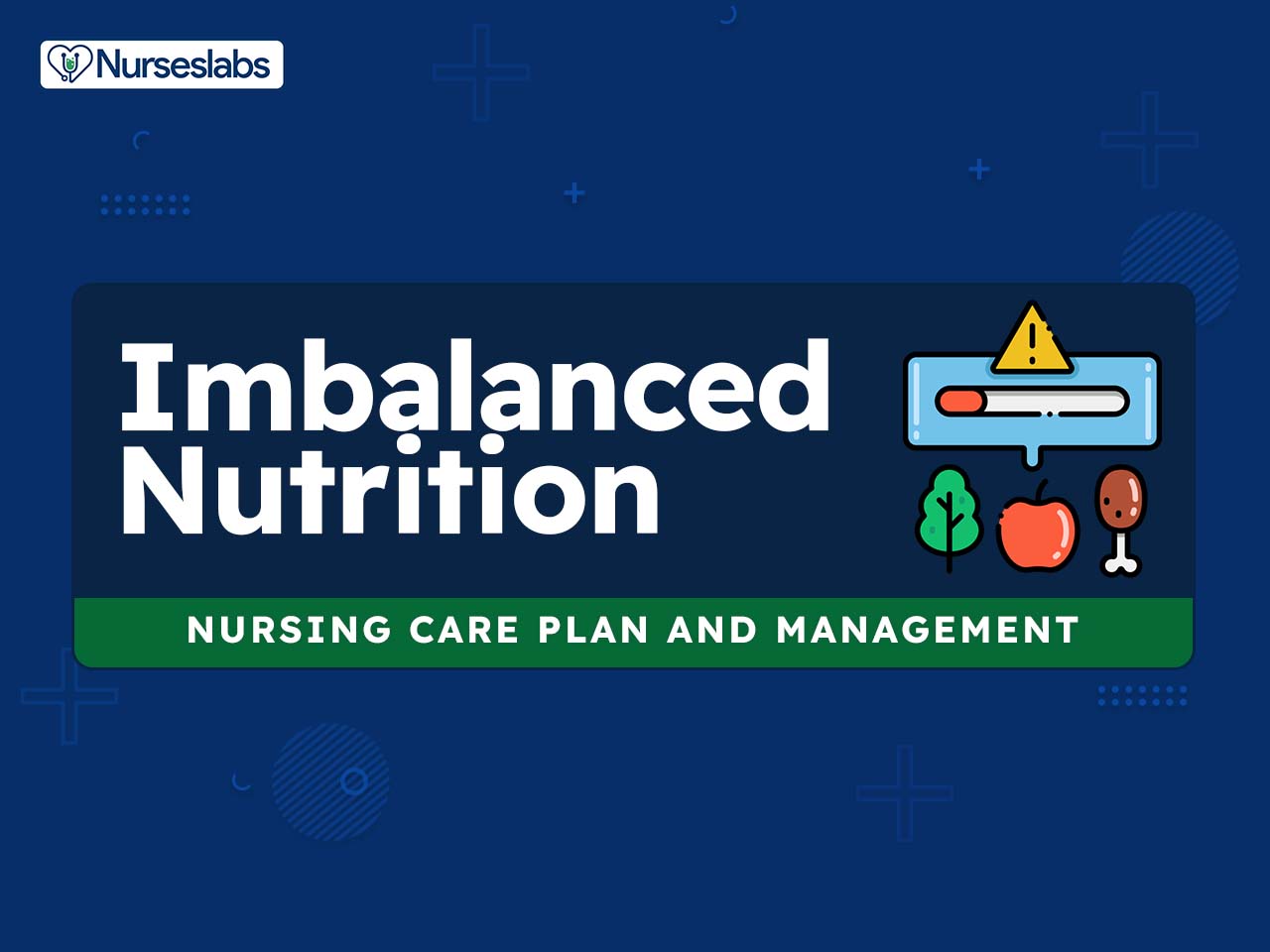


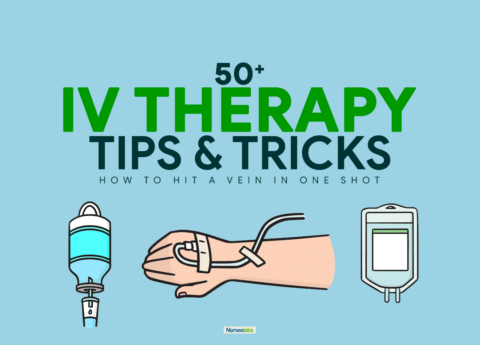

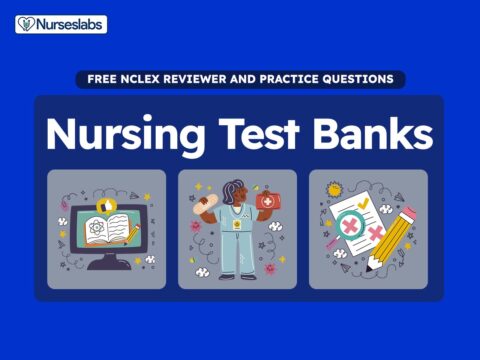












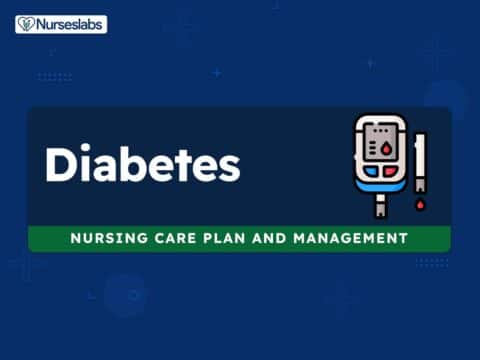

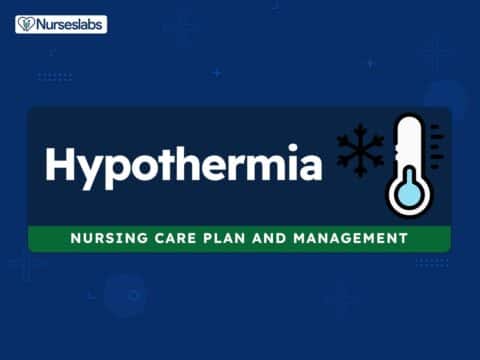



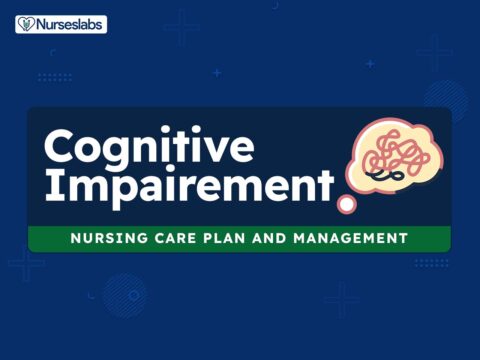
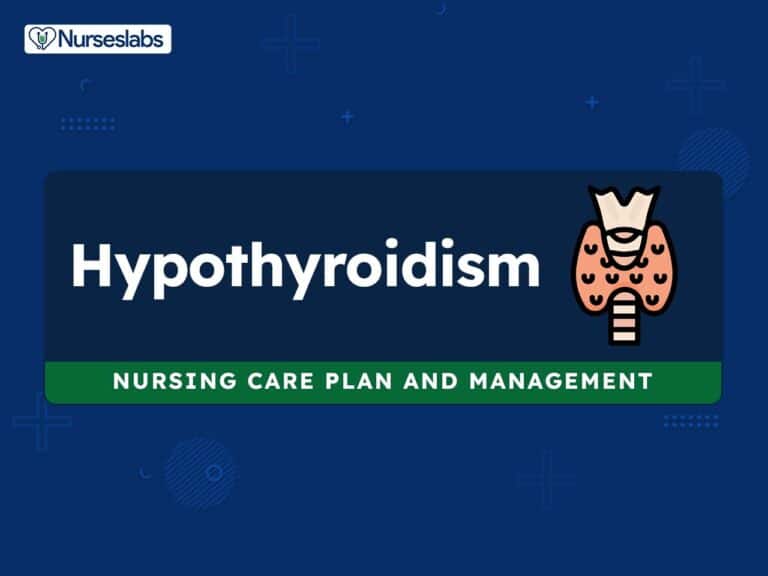
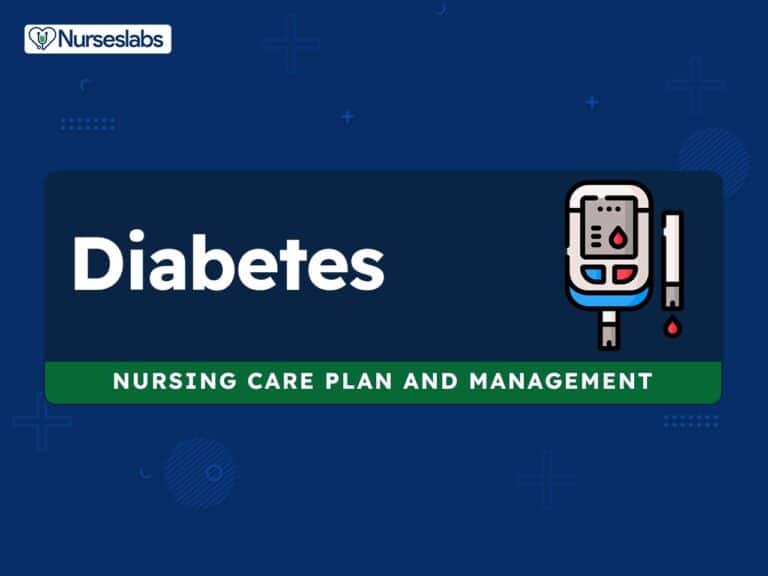

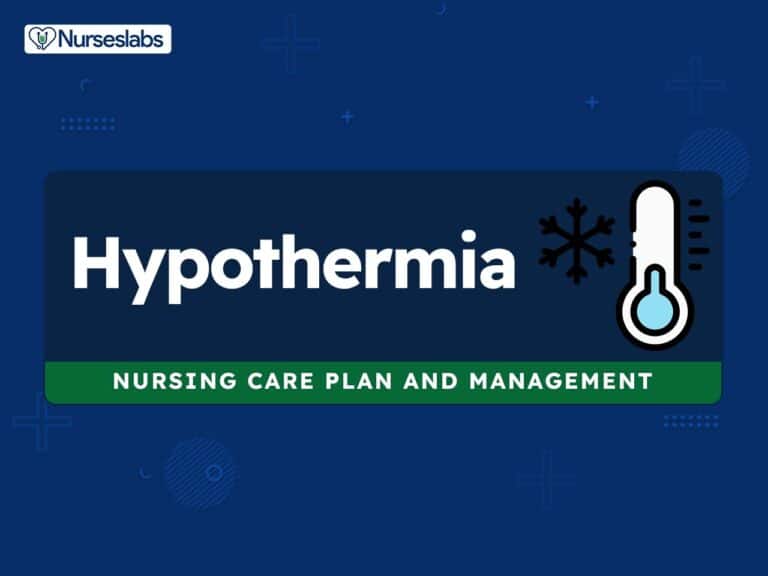
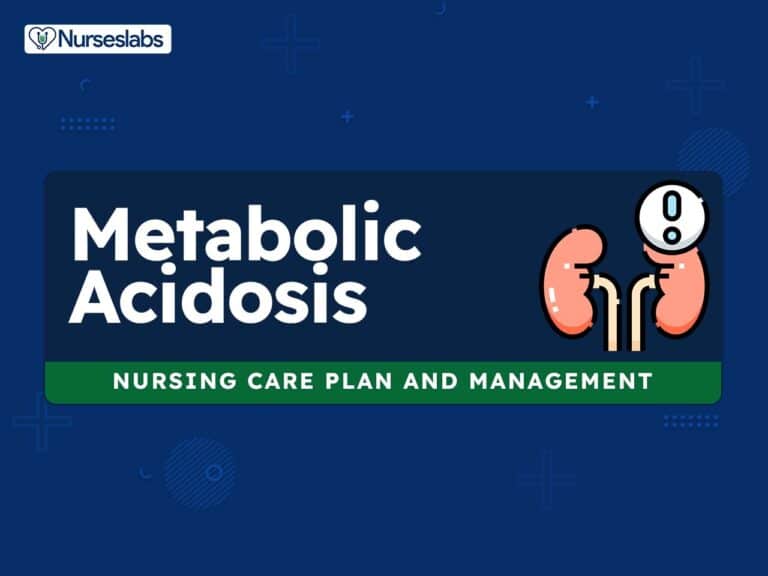
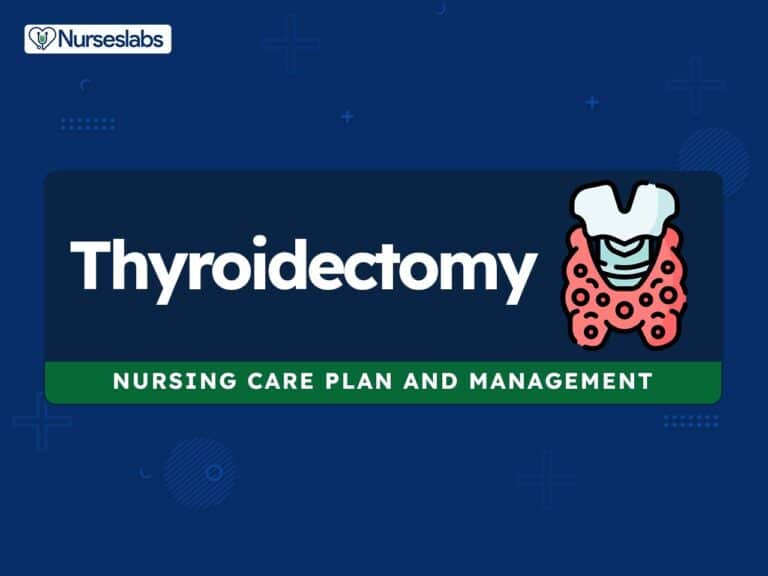
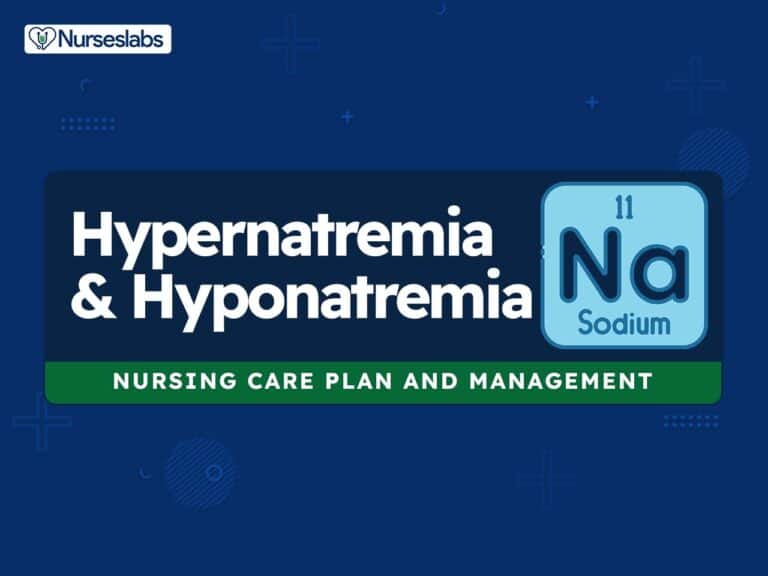

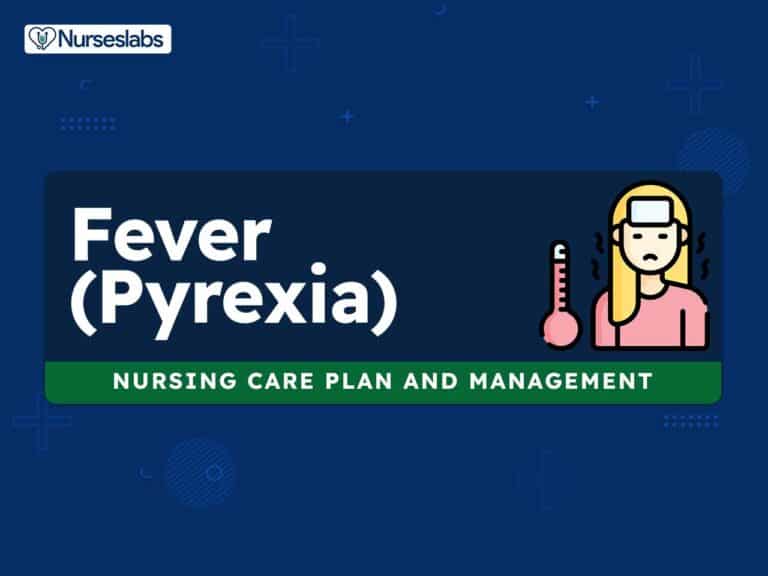
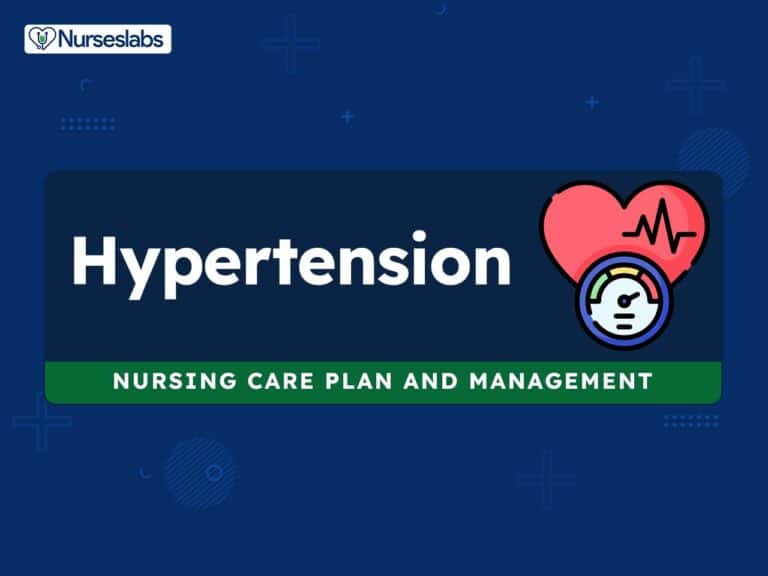


Leave a Comment